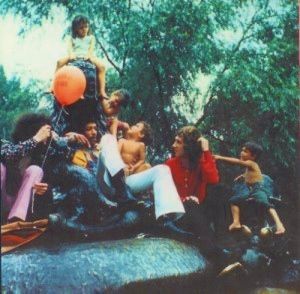Seldom-Told Tales of Rock & Roll
Electric Ladyland Album Cover Controversy
Seldom-Told Tales of Rock and Roll will be a periodical feature of my
Warehouse of Music journal. Each seldom-told tale will feature a back story about a notable artist that few people have previously heard. Over the years, I've accumulated dozens of these stories and I've fact checked all my available sources to confirm the validity of each story.
We kick off the
Seldom Told Tales with the story of the 1968 controversy over the album cover art for the third and final studio recording of the Jimi Hendrix Experience,
Electric Ladyland.
The original cover for
Electric Ladyland on Jimi Hendrix's UK label Polydor was the god-awful photo of 9 naked ladies photographed against a black back-drop.
Moderator cut: image removed
Electric Ladyland cover for UK release
Jimi despised the cover and rightfully so... over the years the " 9 naked ladies" cover art for
Electric Ladyland was a perennial selection on several "all time worst album cover" lists.
In the United States, Hendrix's label Reprise Records nixed the Polydor cover simply on the grounds of nudity. It was the year 1968, the United States was still prudish and record stores in many communties were required to sell any albums with "adult" covers under the counter. Selling
Electric Ladyland as an under the counter item would have large negative impact on sales in the United States.
The worst case scenario was any group of self appointed guardians of the morality could file lawsuit and get a restraining order to get
Electric Ladyland in banned from retail stores as "obscene." John and Yoko's album
Two Virgins was banned in many communities for the cover art nudity and the first three albums by the Fugs were also banned in many communities for the sexually graphic nature of some of the songs.
The highly anticipated double album promised to be the first Hendrix album to accomplish blockbuster chart sales in the United States. Ever mindful of the bottom line, Reprise didn't want to jeopardize the sales of
Electric Ladyland with a controversial album cover.
Instead of the 9 naked ladies UK album cover, Reprise decided to use a blurry red and yellow headshot of Hendrix photographed by Karl Ferris as the album cover for American issue of
Electric Ladyland. The Ferris cover is shown below.
 Electric Ladyland cover for United States release
Electric Ladyland cover for United States release
As it turns out Jimi didn't like the Ferris cover on the American edition either. In fact, Jimi had sent letters to both Reprise and Polydor records telling them exactly what he wanted for the
Electric Ladyland album cover. He expressly asked for a color photo taken by Linda Eastman (the future Mrs. Paul McCartney) of Jimi and the group sitting with children on a sculpture from Alice in Wonderland in Central Park, NY. Both labels ignored Jimi's proposed album cover, which is shown below:
 Electric Ladyland cover proposed by Jimi Hendrix
Electric Ladyland cover proposed by Jimi Hendrix
In the early Nineties when the family of Jimi Hendrix gained control of the Hendrix estate after a long court battle with Jimi's record labels and music publishers. The Hendrix estate dropped the "9 naked ladies" original UK album cover and designated the Karl Ferris photo as the "official" album cover for all future
Electric Ladyland releases, worldwide.
But what about the perfectly charming Linda Eastman photo that Jimi fought so hard to have as the official
Electric Ladyland album cover? I'd certainly buy a vinyl issue edition of with the Eastman photo as the cover, even though I own both the original vinyl 1968 American edition and the brilliantly rendered 1997 remastered edition of
Electric Ladyland on compact disc.
A second, even more consequential artistic dispute about
Electric Ladyland erupted in the final production stages. Upon completion of the final mix of the album, a studio technician erroneously mislabeled the master tapes "
Electric Landlady." The clueless record company executives went with the mislabeled title and nearly released the album as
Electric Landlady until Hendrix threw an 11th hour tantrum and managed to correct the mistake before hundreds of thousands of copies were pressed with the wrong album title.